Embracing the alien spaceship
Dongdaemun Design Plaza attracts crowds
By Korea HeraldPublished : March 23, 2014 - 21:04
The alien spaceship that landed smack in the middle of Seoul opened its doors on Friday with much fanfare. And judging by the crowd that flocked to the cavernous belly of the Dongdaemun Design Plaza on the first two days of its opening ― more than 58,000 visitors on Friday and 168,000 on Saturday, according to its overseer the Seoul Design Foundation ― the latest Seoul landmark, often ridiculed as a “spaceship,” may win over the skeptics who argue that the “monstrous building” costing some 500 billion won is a colossal waste of taxpayer money.
The DDP was the brainchild of former Seoul mayor Oh Se-hoon. With the firm conviction that design would increase the brand-value of the city and lead to an economic boom, Oh set about “designing” the capital. Several urban redevelopment projects, the “Hangang Renaissance” project that included a floating island off the southern bank of the river, beautification of the streets, and revival of the city’s decaying fashion industry with the aim of turning Seoul into an international fashion center were some of the Oh administration’s design initiatives undertaken from July 2006 to August 2011.
“Design is a growth driver of the Seoul economy. We have surprised the world with the Miracle of the Han River and advancements in the IT sector. Now we would like to bring global attention to Seoul with strong design,” said Oh in 2007 upon the city’s designation as the World Design Capital 2010.
What had initially been a project to relocate the country’s first sports stadium, built during the Japanese colonial era in 1925, and turn the area into a park took on a new dimension when Pritzker winner Zaha Hadid’s “Metonymic Landscape” was selected in an international invitational design competition in August 2007.
The DDP was the brainchild of former Seoul mayor Oh Se-hoon. With the firm conviction that design would increase the brand-value of the city and lead to an economic boom, Oh set about “designing” the capital. Several urban redevelopment projects, the “Hangang Renaissance” project that included a floating island off the southern bank of the river, beautification of the streets, and revival of the city’s decaying fashion industry with the aim of turning Seoul into an international fashion center were some of the Oh administration’s design initiatives undertaken from July 2006 to August 2011.
“Design is a growth driver of the Seoul economy. We have surprised the world with the Miracle of the Han River and advancements in the IT sector. Now we would like to bring global attention to Seoul with strong design,” said Oh in 2007 upon the city’s designation as the World Design Capital 2010.
What had initially been a project to relocate the country’s first sports stadium, built during the Japanese colonial era in 1925, and turn the area into a park took on a new dimension when Pritzker winner Zaha Hadid’s “Metonymic Landscape” was selected in an international invitational design competition in August 2007.

Once building began in 2009 the cost snowballed as adjustments were made, including a major alteration to the original plan necessitated by the discovery of historical artifacts from the Joseon Era that were unearthed during the digging process. By the time the construction was completed in November 2013, some 421.2 billion won ($390 million) had been spent on construction alone.
The sheer size and scale of DDP is breathtaking. The plaza, four above-ground stories and three underground levels, totals 85,000 square meters, about the size of three soccer fields, and the park measures 30,000 square meters.
The undulating monolithic structure with perforated skin made from 45,133 aluminum panels that emit light at night has had passersby wondering at the sight ever since the building began to take form.
On Saturday, people flocked to explore the spaceship that had been sitting in their midst. Young kids sat on the gently sloping field of grass on the rooftop, fashion people attending the Seoul Fashion Week created a colorful scene, unprecedented in this neighborhood known for its drabness. Families explored the interior that houses the Kansong Art Museum and its national treasures, design shops featuring the latest trends and a children’s playground that incorporates learning. Long lines formed outside several eateries during the lunch hour.
It is easy to get lost inside the DDP, where one space seems to flow into another. You may start on one floor and unintentionally end up on another. Signs showing directions are of little help. The experience of walking inside the DDP is of one of discovering the unknown, an effect intended by the architect. “The image keeps changing as the new vista and the new shapes open up.
That is what you experience when moving through an unusual, unknown space,” said Patrik Schumacher, a partner at Zaha Hadid Architects, at a press conference on March 11.
Its strangeness aside, the DDP is both an architectural and engineering marvel. Hailed as the world’s largest 3-D amorphous structure, DDP used an advanced computer simulation program, the “Building Information Modeling” program, to achieve its fluid and asymmetrical characteristics.
The vast spaces free of columns were achieved by employing mega-trusses and space frames. The curved and flat aluminum panels, each of different size and measuring 4 mm in thickness, were one of the most challenging aspects of the building. The architectural firm had initially asked British and German companies to manufacture the panels, but was told that they would need to be made by hand and would take 20 years to complete.
Samsung C&T, which built the DDP, was able to come up with a way to manufacture the panels by developing a state-of-the-art molding machine and cutter. Taking on a cutting-edge design has resulted in the development of innovative technologies, and Hadid is now using Korean-made panels in her buildings elsewhere.
When Mayor Park Won-soon came into office in October 2011, nearly 70 percent of the construction had been completed, but he quickly set about changing the direction of the DDP.
Whereas Oh had envisioned DDP as a center for all things design, and saw it as a way to give boost to the design industry by equipping it with a design library which would form a central part of the plaza, Park shifted the focus to the social responsibility of design and opened up the DDP to the general public.
The design library plan was scrapped, replaced by design shops that would serve as incubators for new designers. “The shops will be a living library,” said Park Sam-cheol, DDP Exhibition Division chief. “Occupying some 2,000 pyeong, it will be the biggest design art shop in the world.”
While the Seoul Design Foundation claims that a design library would have been a dead space, the fact that the foundation needs to make the DDP self-sufficient in 2015, raising 32.1 billion won, must have been looming large. Creating more shop spaces would have been a logical answer. The Design Market, a shopping mall section of the DDP, has 28 commercial spaces while the Design Lab has 32 spaces that function as shops for designers.
The shops at the Design Market section of the DDP will stay open 24 hours, keeping in tune with the Dongdaemun area shops that stay open all night.
During the opening ceremony on March 21, Park painted a rosy picture for the DDP and its neighborhood, predicting that the DDP would, over the next 20 years, generate 13 trillion won in production and employment by boosting the business of the clothing retailers, textile markets and clothing manufacturers in the area. The DDP is also expected to attract 5.5 million visitors annually.
“I am aware of the doubts and worries among the press and architects because it is so unique,” he said, noting “the mood is changing and strange beauty is being appreciated. This is usually the case when there is a unique design,” said Schumacher at the March 11 conference.
Hadid said at the same conference that she had tried to combine the topography, landscape and the building in the complex. Taken together, the DDP has created a new topography in the neighborhood, which while it may look alien today, may in fact have set the tone for future developments in the area.
The Eiffel Tower suffered a similar slight when it was erected in Paris in 1889. Parisians demanded that the hideous structure be brought down. Today, it is a landmark indelibly associated with Paris.
Given more time to get to know the iconic building, Seoulites may eventually embrace the DDP as their “spaceship” with fondness.
By Kim Hoo-ran, Senior writer (khooran@heraldcorp.com)
The sheer size and scale of DDP is breathtaking. The plaza, four above-ground stories and three underground levels, totals 85,000 square meters, about the size of three soccer fields, and the park measures 30,000 square meters.
The undulating monolithic structure with perforated skin made from 45,133 aluminum panels that emit light at night has had passersby wondering at the sight ever since the building began to take form.
On Saturday, people flocked to explore the spaceship that had been sitting in their midst. Young kids sat on the gently sloping field of grass on the rooftop, fashion people attending the Seoul Fashion Week created a colorful scene, unprecedented in this neighborhood known for its drabness. Families explored the interior that houses the Kansong Art Museum and its national treasures, design shops featuring the latest trends and a children’s playground that incorporates learning. Long lines formed outside several eateries during the lunch hour.
It is easy to get lost inside the DDP, where one space seems to flow into another. You may start on one floor and unintentionally end up on another. Signs showing directions are of little help. The experience of walking inside the DDP is of one of discovering the unknown, an effect intended by the architect. “The image keeps changing as the new vista and the new shapes open up.
That is what you experience when moving through an unusual, unknown space,” said Patrik Schumacher, a partner at Zaha Hadid Architects, at a press conference on March 11.
Its strangeness aside, the DDP is both an architectural and engineering marvel. Hailed as the world’s largest 3-D amorphous structure, DDP used an advanced computer simulation program, the “Building Information Modeling” program, to achieve its fluid and asymmetrical characteristics.
The vast spaces free of columns were achieved by employing mega-trusses and space frames. The curved and flat aluminum panels, each of different size and measuring 4 mm in thickness, were one of the most challenging aspects of the building. The architectural firm had initially asked British and German companies to manufacture the panels, but was told that they would need to be made by hand and would take 20 years to complete.
Samsung C&T, which built the DDP, was able to come up with a way to manufacture the panels by developing a state-of-the-art molding machine and cutter. Taking on a cutting-edge design has resulted in the development of innovative technologies, and Hadid is now using Korean-made panels in her buildings elsewhere.
When Mayor Park Won-soon came into office in October 2011, nearly 70 percent of the construction had been completed, but he quickly set about changing the direction of the DDP.
Whereas Oh had envisioned DDP as a center for all things design, and saw it as a way to give boost to the design industry by equipping it with a design library which would form a central part of the plaza, Park shifted the focus to the social responsibility of design and opened up the DDP to the general public.
The design library plan was scrapped, replaced by design shops that would serve as incubators for new designers. “The shops will be a living library,” said Park Sam-cheol, DDP Exhibition Division chief. “Occupying some 2,000 pyeong, it will be the biggest design art shop in the world.”
While the Seoul Design Foundation claims that a design library would have been a dead space, the fact that the foundation needs to make the DDP self-sufficient in 2015, raising 32.1 billion won, must have been looming large. Creating more shop spaces would have been a logical answer. The Design Market, a shopping mall section of the DDP, has 28 commercial spaces while the Design Lab has 32 spaces that function as shops for designers.
The shops at the Design Market section of the DDP will stay open 24 hours, keeping in tune with the Dongdaemun area shops that stay open all night.
During the opening ceremony on March 21, Park painted a rosy picture for the DDP and its neighborhood, predicting that the DDP would, over the next 20 years, generate 13 trillion won in production and employment by boosting the business of the clothing retailers, textile markets and clothing manufacturers in the area. The DDP is also expected to attract 5.5 million visitors annually.
“I am aware of the doubts and worries among the press and architects because it is so unique,” he said, noting “the mood is changing and strange beauty is being appreciated. This is usually the case when there is a unique design,” said Schumacher at the March 11 conference.
Hadid said at the same conference that she had tried to combine the topography, landscape and the building in the complex. Taken together, the DDP has created a new topography in the neighborhood, which while it may look alien today, may in fact have set the tone for future developments in the area.
The Eiffel Tower suffered a similar slight when it was erected in Paris in 1889. Parisians demanded that the hideous structure be brought down. Today, it is a landmark indelibly associated with Paris.
Given more time to get to know the iconic building, Seoulites may eventually embrace the DDP as their “spaceship” with fondness.
By Kim Hoo-ran, Senior writer (khooran@heraldcorp.com)
-
Articles by Korea Herald


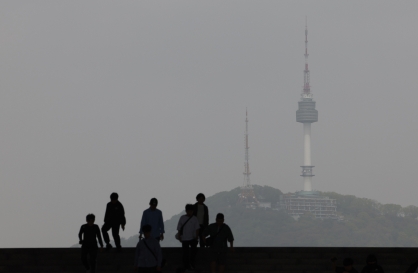
![[AtoZ Korean Mind] Does your job define who you are? Should it?](http://res.heraldm.com/phpwas/restmb_idxmake.php?idx=644&simg=/content/image/2024/05/06/20240506050099_0.jpg&u=)

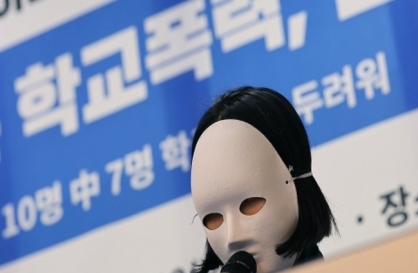









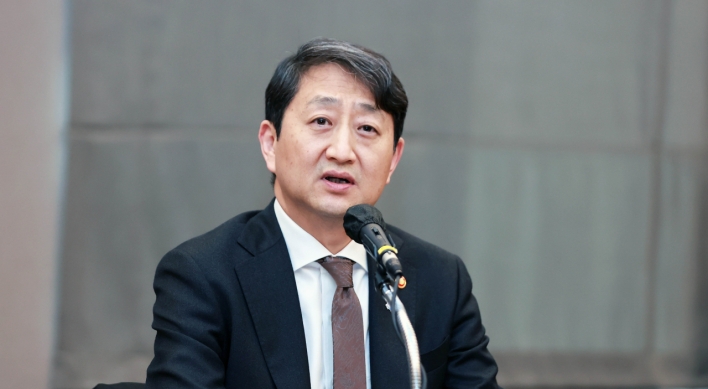
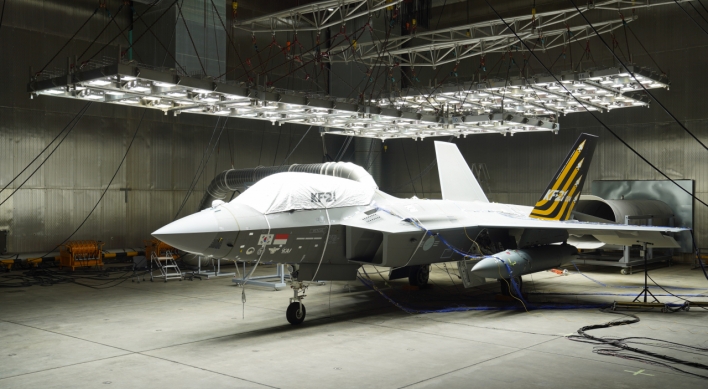
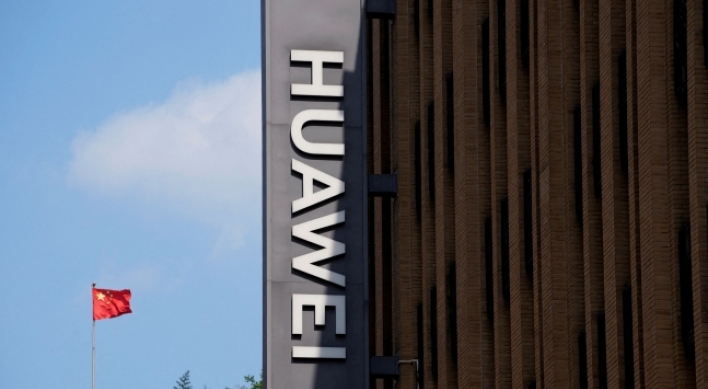

![[K-pop's dilemma] Is Hybe-Ador conflict a case of growing pains?](http://res.heraldm.com/phpwas/restmb_idxmake.php?idx=642&simg=/content/image/2024/05/07/20240507050746_0.jpg&u=)